
EBK PEARSON ETEXT INTERNATIONAL BUSINES
9th Edition
ISBN: 9780136846871
Author: Wild
Publisher: VST
expand_more
expand_more
format_list_bulleted
Question
Chapter 15, Problem 13TU
Summary Introduction
Introduction:
Chrysler is a big brand of minivans. The company has great production techniques but some time it fails also hence, through this new techniques of production the company invented many of minivans. On the other hand Toyota Company is famous for automobile. They are using new techniques of production through which the produce more efficient products.
Characters in the case:
There are Two Characters in this case, one is Chrysler and Toyota.
Adequate information:
Toyota company and Chrysler company came together for their own benefit.
To Determine:
Why Chrysler is interested to share its minivan.
Expert Solution & Answer
Want to see the full answer?
Check out a sample textbook solution
Students have asked these similar questions
Reciprocal Method
Eilers Company has two producing departments and two support departments. The following budgeted data pertain to
these four departments:
Support Departments
Producing Departments
General
Factory
Receiving
Assembly
Finishing
Direct overhead
$400,000
$150,000
$45,000
$71,000
Square footage
2,700
5,400
5,400
Number of receiving orders
300
1,680
1,020
Direct labor hours
25,000
40,000
Required:
1. Allocate the overhead costs of the support departments to the producing departments using the reciprocal method.
(Round allocation ratios to two decimal places. Round allocated costs to the nearest dollar. If an amount is zero, enter
"0".)
Allocation ratios:
Square footage
General Factory Receiving Assembly Finishing
0
0
Number of receiving orders
0.10
0
0.56
0.34
Allocations:
Direct overhead cost
General Factory
Receiving
Total
General Factory Receiving Assembly Finishing
$
$
$
$
400,000
150,000
45,000
71,000
$
$
$
$
2. Using direct labor hours, compute departmental overhead…
?!
Windsor Fabrication estimates its manufacturing overhead to be $720,000 and its direct labor costs to be $600,000 for year 5. Windsor worked three jobs for the year. Job 5-1, which was sold during year 5, had actual direct labor costs of $180,000. Job 5-2, which was completed but not sold at the end of the year, had actual direct labor costs of $270,000. Job 5-3, which is still in work-in-process inventory, had actual direct labor costs of $150,000. The actual manufacturing overhead for year 5 was $700,000. Manufacturing overhead is applied on the basis of direct labor costs. a) How much overhead was applied to each job in year 5? b) What was the over- or underapplied manufacturing overhead for year 5?
Chapter 15 Solutions
EBK PEARSON ETEXT INTERNATIONAL BUSINES
Knowledge Booster
Similar questions
- Expert need your helparrow_forwardI need assistance with this financial accounting question using appropriate principles.arrow_forwardHorngren's Financial & Managerial Accounting: The Managerial Chapters, 8th Edition. E-M:9-16 Using responsibility reports to evaluate cost, revenue, and profit centers The accountant for a subunit of Bellamy Sports Company went on vacation before completing the subunit’s monthly responsibility report. This is as far as she got: Subunit X Revenue by Product Actual Results Flexible Budget Variance F or U Flexible Budget Sales Volume Variance F or U Static Budget Downhill-RI $ 326,000 (a) (b) $ 19,000 F $ 301,000 Downhill-RII $ 154,000 (c) $ 164,000 (d) $ 148,000 Cross-EXI $ 280,000 $ 1,000 U $ 281,000 (e) $ 297,000 Cross-EXII $ 254,000 (f) $ 249,000 $ 16,500 U $ 265,500 Snow-LXI $ 424,000 $ 2,000 F (g) (h) $…arrow_forward
- Can you explain the process for solving this financial accounting problem using valid standards?arrow_forwardI need guidance with this general accounting problem using the right accounting principles.arrow_forwardI am trying to find the accurate solution to this general accounting problem with appropriate explanations.arrow_forward
arrow_back_ios
SEE MORE QUESTIONS
arrow_forward_ios
Recommended textbooks for you
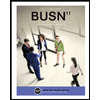 BUSN 11 Introduction to Business Student EditionBusinessISBN:9781337407137Author:KellyPublisher:Cengage Learning
BUSN 11 Introduction to Business Student EditionBusinessISBN:9781337407137Author:KellyPublisher:Cengage Learning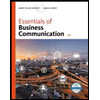 Essentials of Business Communication (MindTap Cou...BusinessISBN:9781337386494Author:Mary Ellen Guffey, Dana LoewyPublisher:Cengage Learning
Essentials of Business Communication (MindTap Cou...BusinessISBN:9781337386494Author:Mary Ellen Guffey, Dana LoewyPublisher:Cengage Learning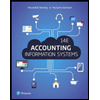 Accounting Information Systems (14th Edition)BusinessISBN:9780134474021Author:Marshall B. Romney, Paul J. SteinbartPublisher:PEARSON
Accounting Information Systems (14th Edition)BusinessISBN:9780134474021Author:Marshall B. Romney, Paul J. SteinbartPublisher:PEARSON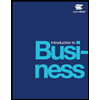
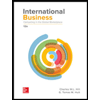 International Business: Competing in the Global M...BusinessISBN:9781259929441Author:Charles W. L. Hill Dr, G. Tomas M. HultPublisher:McGraw-Hill Education
International Business: Competing in the Global M...BusinessISBN:9781259929441Author:Charles W. L. Hill Dr, G. Tomas M. HultPublisher:McGraw-Hill Education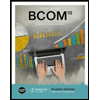

BUSN 11 Introduction to Business Student Edition
Business
ISBN:9781337407137
Author:Kelly
Publisher:Cengage Learning

Essentials of Business Communication (MindTap Cou...
Business
ISBN:9781337386494
Author:Mary Ellen Guffey, Dana Loewy
Publisher:Cengage Learning

Accounting Information Systems (14th Edition)
Business
ISBN:9780134474021
Author:Marshall B. Romney, Paul J. Steinbart
Publisher:PEARSON


International Business: Competing in the Global M...
Business
ISBN:9781259929441
Author:Charles W. L. Hill Dr, G. Tomas M. Hult
Publisher:McGraw-Hill Education
